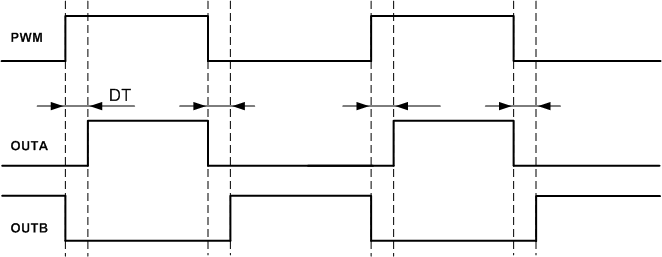ZHCSJ23C November 2018 – September 2019 UCC20225-Q1 , UCC20225A-Q1
PRODUCTION DATA.
- 1 特性
- 2 应用
- 3 说明
- 4 修订历史记录
- 5 Pin Configuration and Functions
-
6 Specifications
- 6.1 Absolute Maximum Ratings
- 6.2 ESD Ratings
- 6.3 Recommended Operating Conditions
- 6.4 Thermal Information
- 6.5 Power Ratings
- 6.6 Insulation Specifications
- 6.7 Safety-Related Certifications
- 6.8 Safety Limiting Values
- 6.9 Electrical Characteristics
- 6.10 Switching Characteristics
- 6.11 Thermal Derating Curves
- 6.12 Typical Characteristics
- 7 Parameter Measurement Information
- 8 Detailed Description
-
9 Application and Implementation
- 9.1 Application Information
- 9.2
Typical Application
- 9.2.1 Design Requirements
- 9.2.2
Detailed Design Procedure
- 9.2.2.1 Designing PWM Input Filter
- 9.2.2.2 Select External Bootstrap Diode and its Series Resistor
- 9.2.2.3 Gate Driver Output Resistor
- 9.2.2.4 Estimate Gate Driver Power Loss
- 9.2.2.5 Estimating Junction Temperature
- 9.2.2.6 Selecting VCCI, VDDA/B Capacitor
- 9.2.2.7 Dead Time Setting Guidelines
- 9.2.2.8 Application Circuits with Output Stage Negative Bias
- 9.2.3 Application Curves
- 10Power Supply Recommendations
- 11Layout
- 12器件和文档支持
- 13机械、封装和可订购信息
8.4.2.2 DT Pin Left Open or Connected to a Programming Resistor between DT and GND Pins
If the DT pin is left open, the dead time duration (tDT) is set to <15-ns. It is not recommended to leave DT pin open for noisy environment. One can program tDT by placing a resistor, RDT, between the DT pin and GND. The appropriate RDT value can be determined from Equation 1, where RDT is in kΩ and tDT in ns:

The steady state voltage at DT pin is around 0.8V, and the DT pin current will be less than 10uA when RDT=100-kΩ. Since the DT pin current is used internally to set the dead time, and this current decreases as RDT increases, it is recommended to parallel a ceramic capacitor, 2.2-nF or above, close to DT pin to achieve better noise immunity and better dead time matching between two channels, especially when the dead time is larger than 300-ns.
The input signal’s falling edge activates the programmed dead time for the output. An output signal's dead time is always set to the driver’s programmed dead time. The driver dead time logic is illustrated in Figure 36:
 Figure 36. Input and Output Logic Relationship with Dead Time
Figure 36. Input and Output Logic Relationship with Dead Time